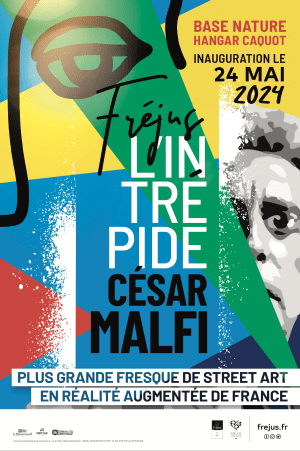Description
A large model of the Roman city of Forum Iulii, realized in 2006, welcomes you in the entrance hall of the museum. The collections are presented in four rooms of the 13th and 16th century of the Episcopal Group in Fréjus. In each of them, through objects from archaeological digs carried out from the 17th to the 20th century, aspects of the history, urban planning, economy and daily life of the city during the Roman era is covered.
Ticket office
Share
Favourite
- In the city centre
- Exceptional pieces
Practical info
Opening times
From 02 January to 31 March and from 1 October to 31 December
Open Tuesday to Saturday from 9:30 am to midday and from 2:00 pm to 4:30 pm
Closed on Sundays, Mondays and public holidays.
From 1 April to 30 September
Open Tuesday to Sunday from 9:30 am to 12:30 pm and from 2 pm to 6 pm
Closed on Mondays and public holidays.
No further entrance to the sites 15 minutes before closing time.
Prices
Admission only: €3 (individual ticket, valid for one day)
Fréjus Pass: €6 (Fréjus Individual Pass 4 sites, valid for 7 days). From 18 years old.
Frejus Reduced Pass: €4 (Fréjus Pass Individual 4 sites, valid 7 days). Children from 12 to 17 years old, students under 25 years old (on presentation of the card), group of more than 10 people, jobseekers (on presentation of proof), school classes and schools outside Fréjus / Saint-Raphaël.
Fréjus Integral Pass: Individual Pass 4 sites* and cloister of the cathedral, valid for 7 days. The Integral Pass does not exist with a reduced rate.
Free: Children under 12, people with disabilities (on presentation of proof), guides approved by the Ministry of Culture and Communication (with a professional card), curators of the territorial heritage or the State, journalists (with a professional card), school groups within the framework of the Artistic and Cultural Education Convention and their accompaniers and teachers in Fréjus within the framework of preparing visits with the prior approval of the Head of Architecture and Heritage.
More information
Many ancient sculpted pieces have been found. Among them, some were part of the monumental decoration found on public and private buildings in the Roman city (theatre, baths, large houses).
For example a Jupiter’s head or even a deity, dressed in a long tightly draped dress and a double-headed Hermes bust in Carrara marble discovered in 1970, which is the most remarkable and most famous piece in the museum, and is now the symbol of the City of Fréjus.
A so-called “Panther” mosaic discovered in 1921, is also presented and is in a very good state of conservation.
A room dedicated to ancient and modern ceramics is testimony to the existence of series of workshops and a large deposit of good quality clay. These clays were exploited until the 20th century. Architectural terracotta plates, table and kitchenware, amphorae, the collection gives an idea of the variety of items produced.
A house discovered underneath Place Formigé, provides a good example of the luxurious home in the era of Augustus. The reconstitution of the reception and ceremonial room has a black and white mosaic floor and murals inspired by the designs commonly found at the beginning of the 1st century AD (third Pompeian style).
Another room presents the results of excavations in various necropolises (ancient cemeteries), located outside the ramparts. Tombs and funerary monuments were revealed. The first death rite was cremation. You will find urns designed to hold the ashes of the deceased and made in different materials including glass, ceramic, lead and sandstone.
Towards the 2nd century burials began appearing, sarcophagi and tombs shuttered with tiles were used.
A range of offerings accompanied the deceased in the grave. The most commonly found items are ceramic objects and basmals (small flasks) made of glass and used to contain scented oils. Mirrors, toiletries and small items of bronze or silver jewellery, were also found. The bronze obulus coins found were to pay the ferryman Charon, the god responsible for carrying the souls of deceased over the river Styx, which divided the world of the living from the world of the dead.
This museum is an official “Musée de France”. This name is given to the most important French museums when the preservation and presentation of their collections is in the public interest.






